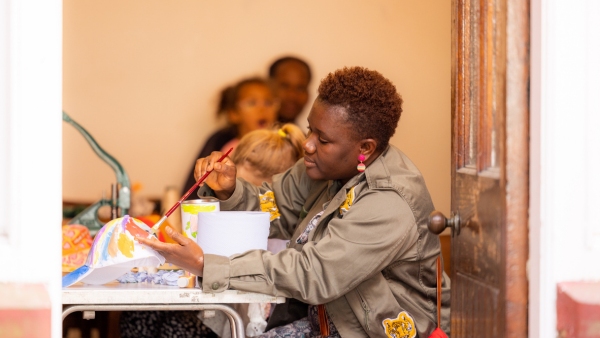Becoming excited by an idea is a bit like falling in love: sometimes, it is an instant, head over heels moment but it can also come from the dawning realisation that a presence at the edge of your world has the potential to be at the centre of it.
As an example of the latter, over the next couple of days I want to explain why I am becoming besotted with the concept of collaboration in the development and reform of school education.
I have an old friend to thank for my new commitment; the three powers theory (derived from ‘Cultural Theory’ and the work of Mary Douglas). As regular readers will know, this theory argues, first, that change can be pursued using hierarchical, individualistic or solidaristic means; second, that often the most effective solutions find some way of combining these sources of power (if they are not combined they will often undermine good intentions); and third, that this is always difficult; such solutions are contextually contingent and ‘clumsy’ because the three forms of power are inherently in tension with each other (indeed their power partly derives from their critique of each other).
My shaft of light was to see that ‘collaboration’ when done properly has enormous potential to achieve this clumsy mix of forms of power:
- From an individualistic perspective, collaboration must be seen to be in the interests of those engaged.
- From a solidaristic perspective, collaboration needs to be underpinned by trust based on sufficiently shared norms and values.
- From a hierarchical perspective, system and organisation leaders - recognising how hard it is to establish and maintain - have to enable, incentivise and support collaboration
However, each of these ways of valuing and pursuing collaboration could unbalance the whole endeavour:
- If collaboration is too individualistic it becomes merely transactional, less creative and more prone to abuse and conflict
- If collaboration relies too much on solidaristic values it will often lack clarity and strength and end up being more of a friendship (how often are you really challenging to your friends?)
- If collaboration is too controlled and managed by hierarchy it can become bureaucratic and lifeless
At six distinct levels effective collaboration could enable a step change in the functioning of the schools system.
- Relationships between the centre, localities and schools; which are too often characterised by suspicion, misunderstanding and resentment
- Relationships between schools; which are rarely as robust and committed as they should be
- Relationships between teachers; which are too often absent or shallow but could be the foundation for continuously improving professional practice
- Relationships between schools and other local bodies; which tend to be weak or merely transactional
- Relationships between teachers and pupils; learning is still too often seen as something that is done to pupils not with them
- Relationships between pupils; even though team working is vital in the modern workplace, and children can powerfully support each other, we still see schooling primarily as a process of individual endeavour and ranking.
In my next post I will offer some evidence of what ‘clumsy collaboration’ has achieved and might achieve at these levels.
Fortunately, given my lack of educational scholarship, members of the RSA education team have kindly agreed (as if I gave them any choice) to comment on my thoughts and add their own.
Related articles
-
Open RSA knowledge standards
Alessandra Tombazzi Tom Kenyon
After investigating ‘knowledge commons’, we're introducing our open RSA standards and what they mean for our practice, products and processes.
-
RSA Catalyst Awards 2023: winners announced
Alexandra Brown
Learn about the 11 exciting innovation projects receiving RSA Catalyst funding in our 2023 awards.
-
Investment for inclusive and sustainable growth in cities
Anna Valero
Anna Valero highlights a decisive decade for addressing the UK’s longstanding productivity problems, large and persistent inequalities across and within regions, and delivering on net zero commitments.




Be the first to write a comment
Comments
Please login to post a comment or reply
Don't have an account? Click here to register.